In Vietnam, coffee isn’t just caffeine – it’s a daily love language. Morning hustle, late-night chats on tiny stools, always a Phin dripping away.
Let’s pick a real Phin (no flimsy heartbreaks) and brew it right like a local.

Vietnamese Coffee & The Legendary Phin
Vietnamese coffee has a story as bold as the brew itself. When the French showed up during colonial times, they didn’t just bring coffee plants — they also came with baguettes and a love for silky liver pâté.
The collision of cultures gave us icons like Banh Mi and Pate Chaud (and yes, I fully geek out on these French-Vietnamese mashups).

But our coffee journey was far from smooth. Production nearly collapsed during the two Indochina wars. Then came the unexpected comeback: East Germany of all places stepped in during the 1980s to invest in Vietnam’s coffee farms.
By the 1990s, Vietnam went from a quiet player to the world’s second-largest coffee producer, right after Brazil. Talk about a glow-up.
You simply cannot make real Vietnamese coffee without a phin filter, a little metal brewer.
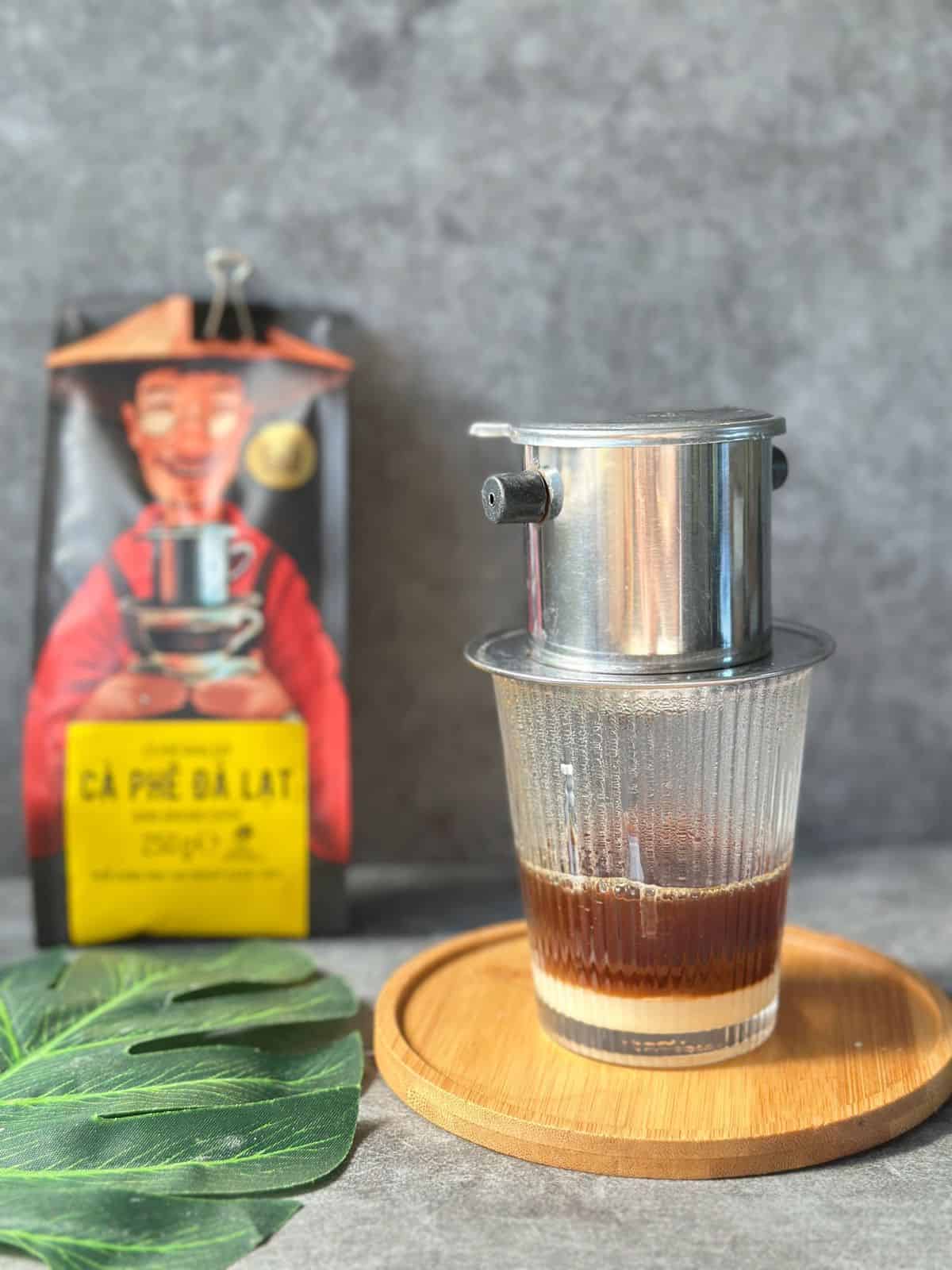
Even the name phin comes from the French word filtre, but over time, it became something wholly, proudly Vietnamese.
The phin actually has fancy ancestry. It was inspired by an early coffee maker designed in the 19th century by Jean-Baptiste de Belloy, the Archbishop of Paris.
His idea was beautifully simple: stack two chambers, coffee in the middle, hot water on top, and let gravity work.

While the rest of the world moved on to paper filters and electric machines, Vietnam stuck with the phin. It’s affordable, durable, portable, and brews anywhere — from a tiny sidewalk stool to your kitchen at home.
What’s in a Phin Filter?

A phin may look tiny and unassuming, but every piece has a job to do:
- A perforated plate that sits right on top of your glass.
- A brewing chamber where you add your coffee grounds.
- An insert (kind of like a mini tamper) to gently press the coffee down.
- And a lid to keep the heat in while the magic drip happens.
How to Pick the Right Phin
Not all phin filters are made the same. They usually come in aluminum, stainless steel, or ceramic – and each has its quirks.
- Aluminum – This is the old-school favorite. It’s cheap, super light, and great at holding heat, which helps your coffee “bloom” properly. Some people worry about long-term aluminum exposure, but for brewing coffee, it’s generally considered safe.
- Anodized Aluminum – Like aluminum, but upgraded. It’s scratch-resistant, sturdier, and has a smooth, non-stick surface that makes cleaning easier.
- Stainless Steel – Built like a tank. It’s durable and safe but doesn’t keep the heat quite as well as aluminum.
- Ceramic – A stylish choice that’s totally safe, but it’s heavier and not as good at heat retention as metal filters.
How to Brew Vietnamese Coffee with a Phin
1. Choose Your Coffee
Vietnamese coffee gets its signature punch from Robusta — bold, earthy, and strong enough to stand up to sweetened condensed milk.
Whenever I fly home, I always stuff my suitcase with coffee (plus Vietnamese bean-to-bar chocolate).
If you need a starting point, I already have a list of my favorite Vietnamese coffee brands waiting for you.
2. Set Up Your Phin
- Warm your phin with hot water first — it helps the coffee bloom and makes a noticeable difference.
- Add one heaping tablespoon of ground coffee into the chamber, give it a gentle shake to level it, then place the insert on top.
- No need to press down — the phin does its best work when you let gravity be the barista.
3. Let It Drip
- Pour a small splash of hot water (around 175°F / 80°C) to let the grounds bloom.
- Set the phin on its base over your glass (careful, it’s hot!), fill the chamber with more hot water, cover with the lid, and let it drip slowly for about 4–5 minutes.
- If the drip stalls, just tap it lightly underneath with a spoon to wake it up.
When the last drop lands, stir in condensed milk to your taste. Add ice if you’re craving Ca Phe Sua Da. Sip, smile, repeat.
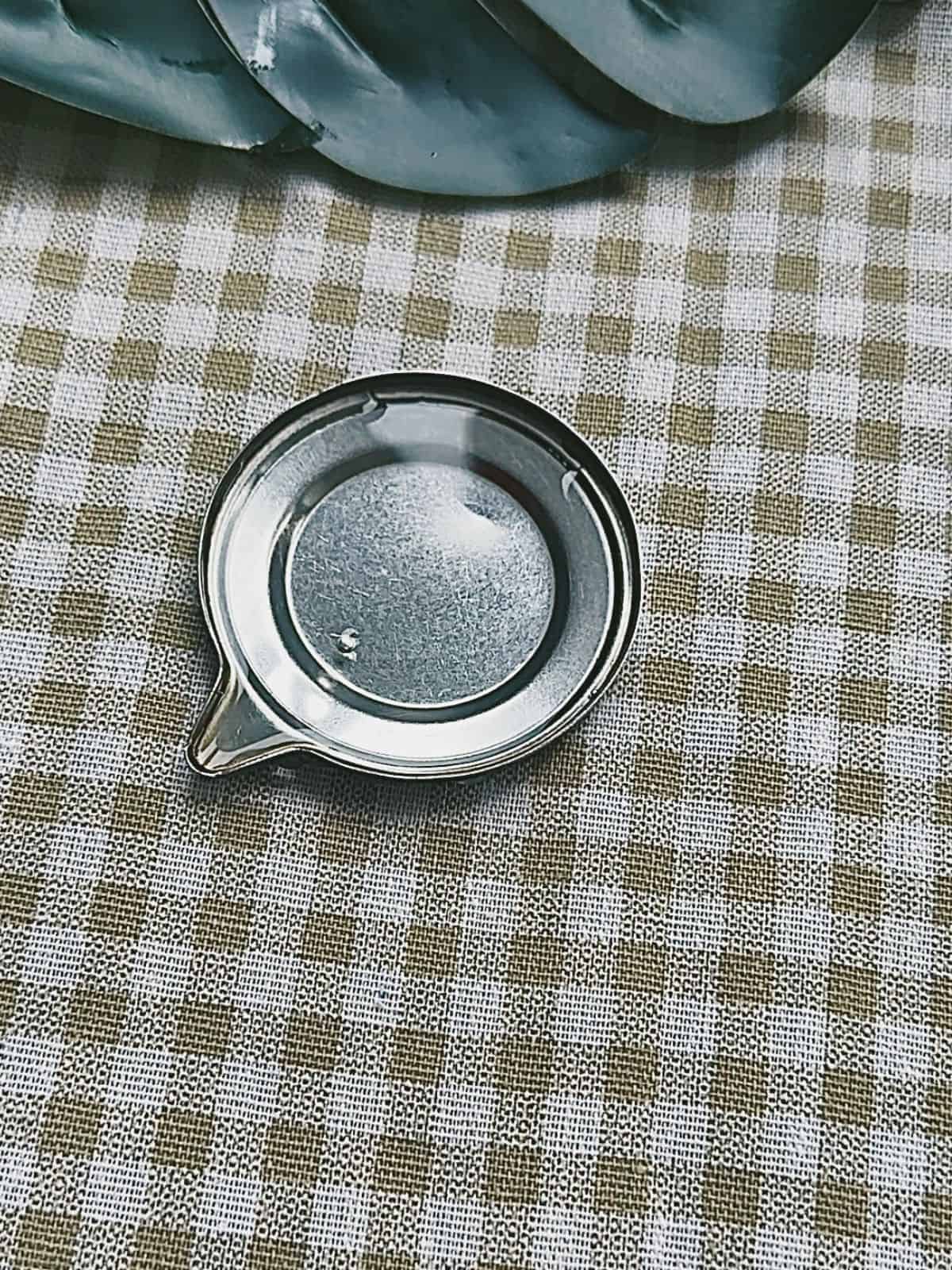
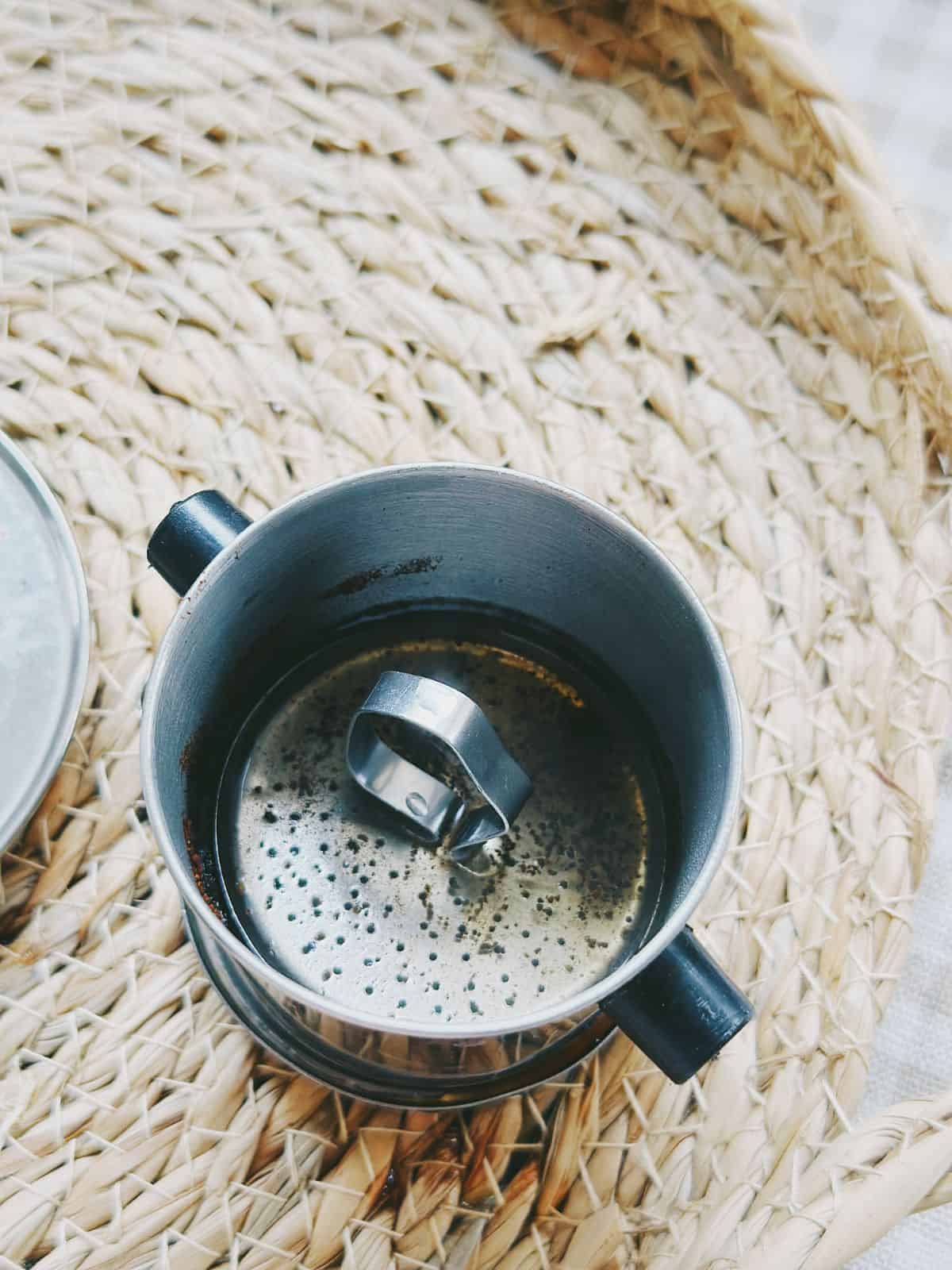
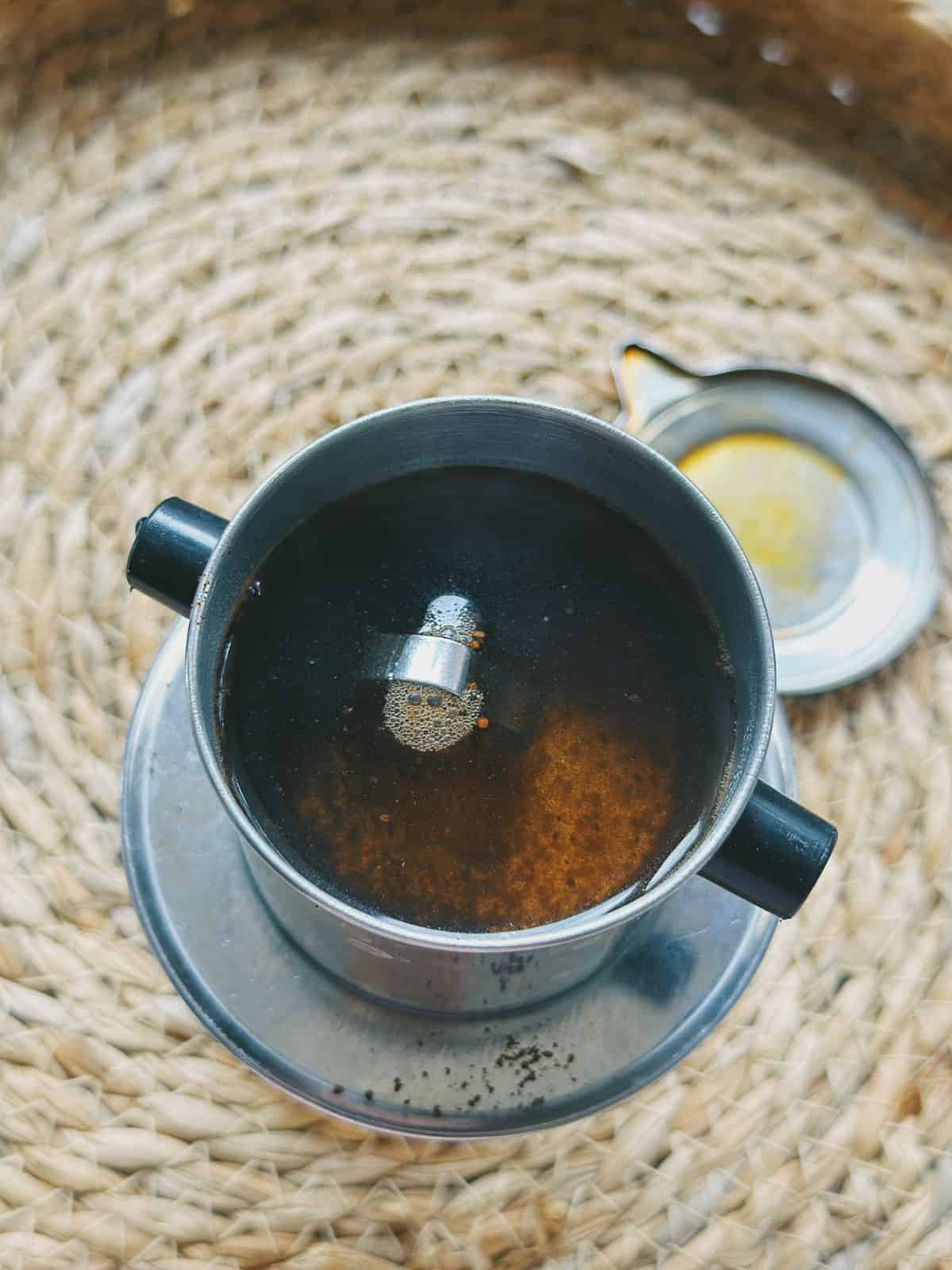
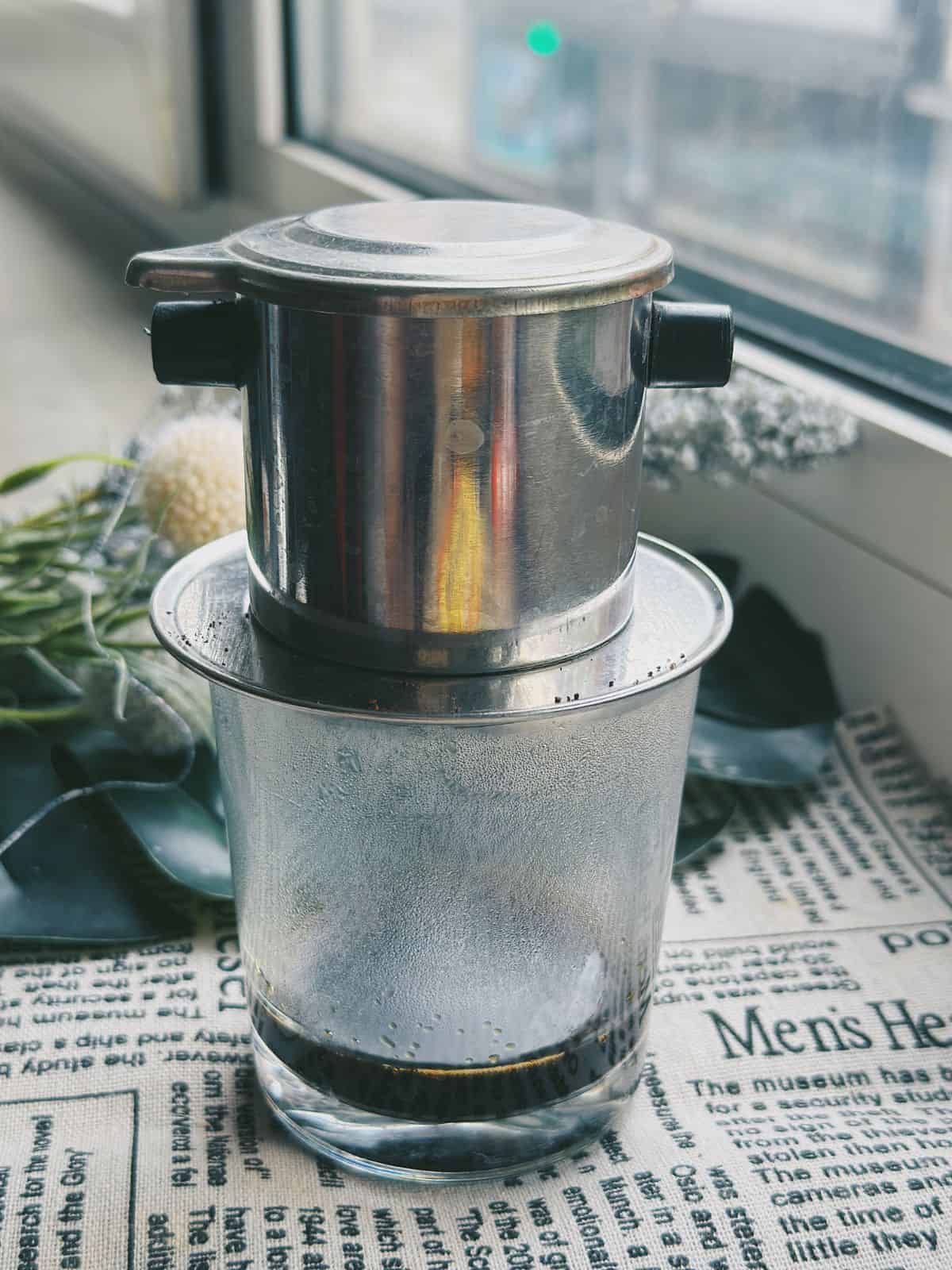
More Ways to Enjoy Vietnamese coffee
Egg Coffee (Cà Phê Trứng) – Silky, creamy, custard-like foam on top of strong coffee.
Salted Coffee (Cà Phê Muối) – A touch of salt in creamy milk enhances flavor (like salted caramel coffee.
Coconut Coffee (Cà Phê Cốt Dừa) – Coffee blended with coconut milk/cream.
Avocado Coffee – Creamy Vietnamese avocado smoothie kissed with a shot of coffee.
Banh Flan – Vietnamese caramel flan, often served with a drizzle of coffee.
Vietnamese Flan Coffee Jelly – A fun, wobbly dessert where flan and coffee meet in the best way.
Dive Deeper into Vietnam’s Rich Food Culture
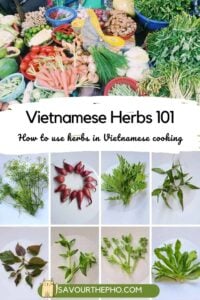
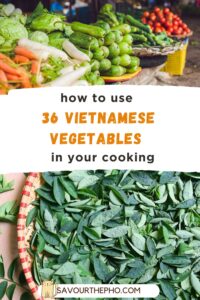


You can discover a compilation of Vietnamese recipes on my blog and subscribe for new updates.
And don’t forget to stay in touch with me on Instagram, Facebook, Pinterest, and YouTube 🥰.
